A very noisy pious bird wearing a very stylish white fluffy cravat while sporting a prominent horn on his nose.
Meet the Noisy Friarbird
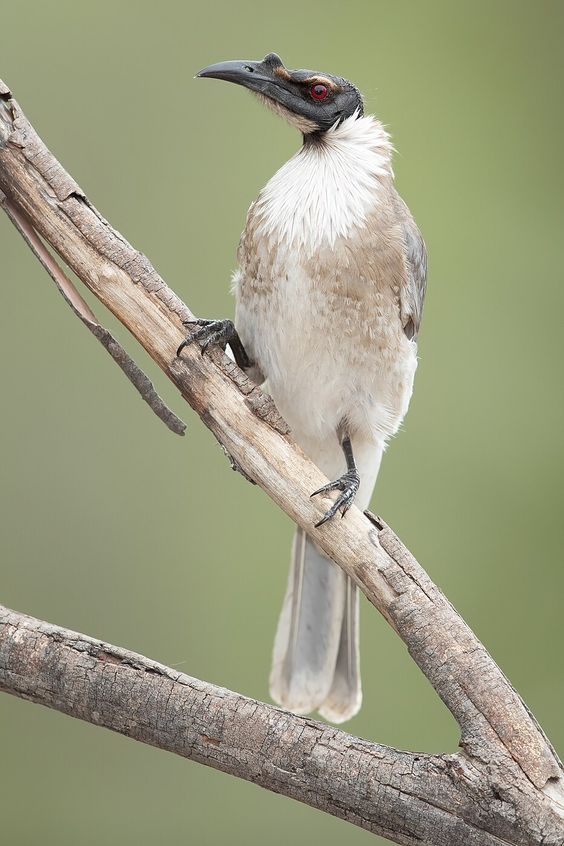
The noisy friarbird (Philemon corniculatus) is a large member of the honeyeater family measuring 31 – 36 cm (12 – 14) in length. It has a highly distinctive black bald head, mostly grey-brown plumage except for the chest and belly, which is more of an off-white color. The eyes are red, the bill is strong with a prominent “bump” on the base. Tail feathers are silvery-white with white tips.
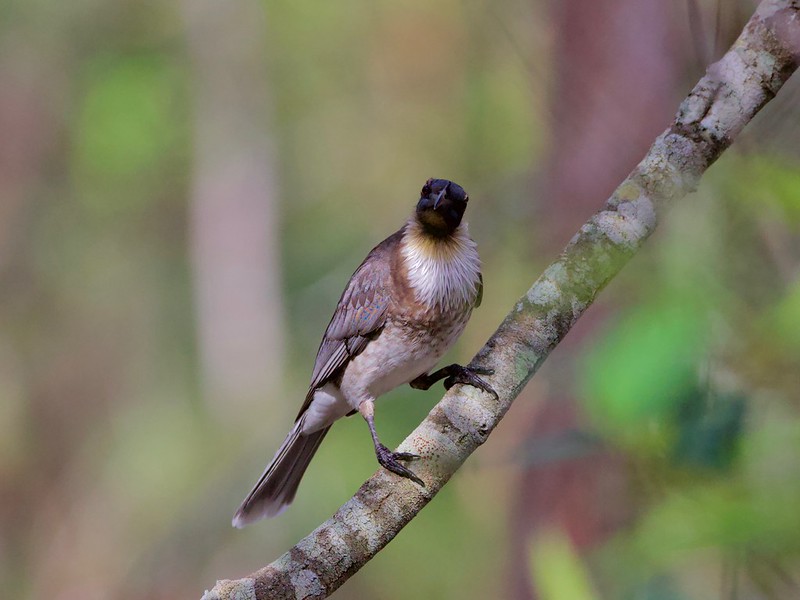
Photo Courtesy of Mark Gillow / CC BY 2.0
Males and females look very similar in appearance.
Though males are slightly larger than females.
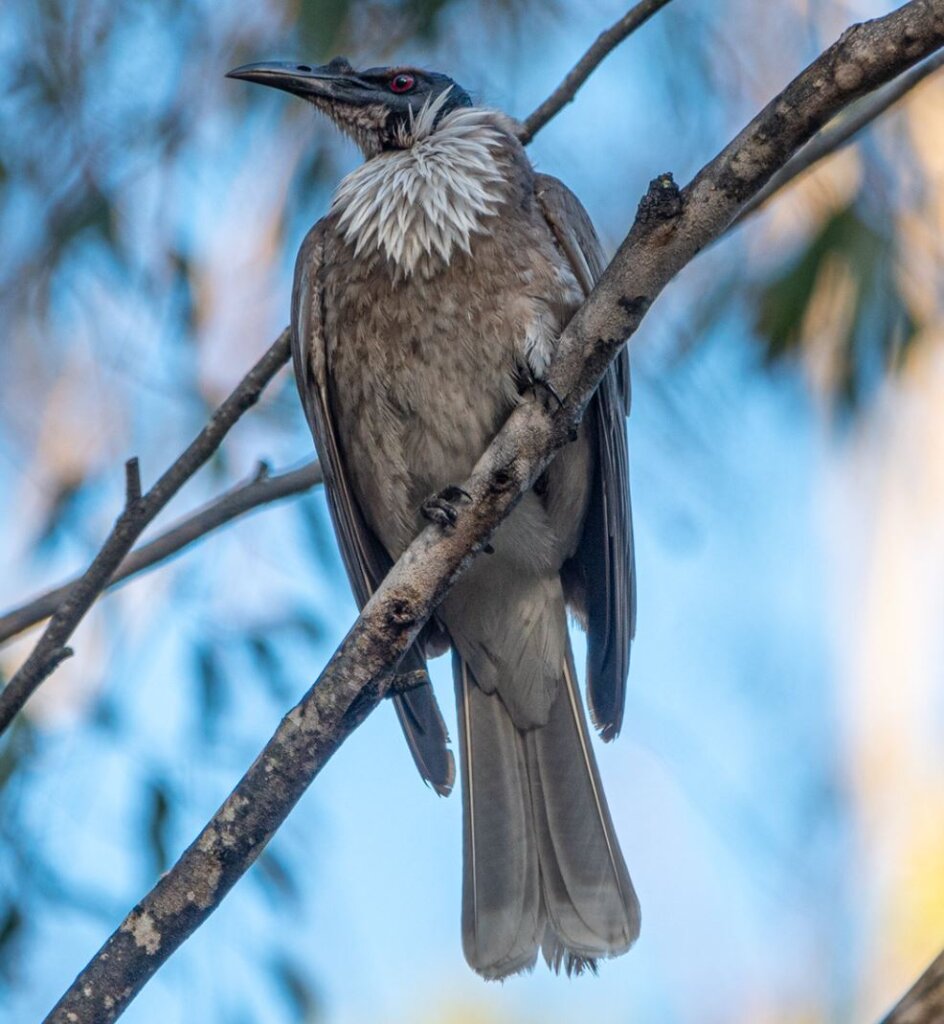
Photo Courtesy of Steve Bittinger / CC BY 2.0
These birds are native to southern Papua New Guinea and eastern Australia.
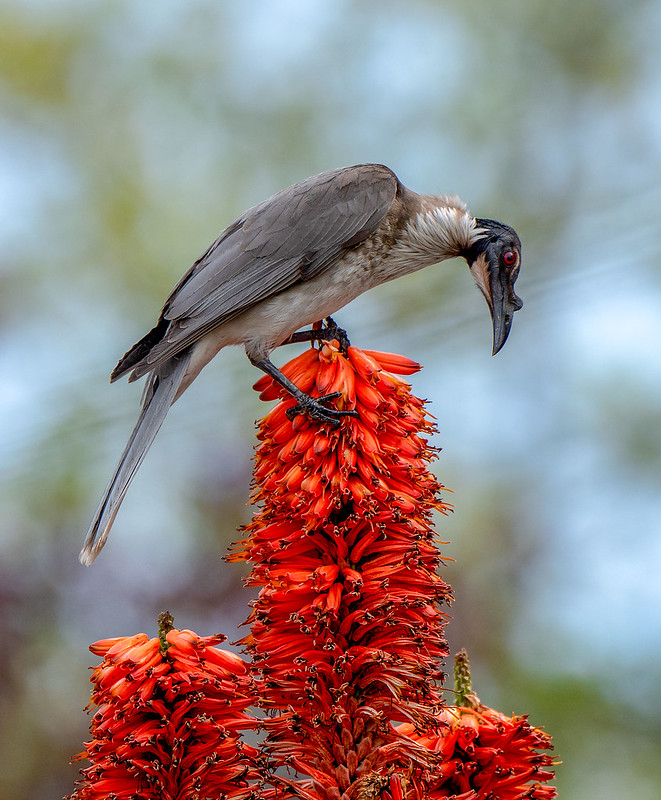
Photo courtesy of Rod Waddington / CC BY-SA 2.0
These birds like to inhabit dry forested areas as well as other woodlands, though they also like coastal scrub and heathlands. They can also be found in wetlands and wet forested areas.

Photo Courtesy of Ms_Voren / CC BY-SA 2.0
This species of honeyeater feeds on nectar, fruit, and native groups. The consumption of commercially grown fruit sometimes brings them into conflict with farmers who regard them as pests.
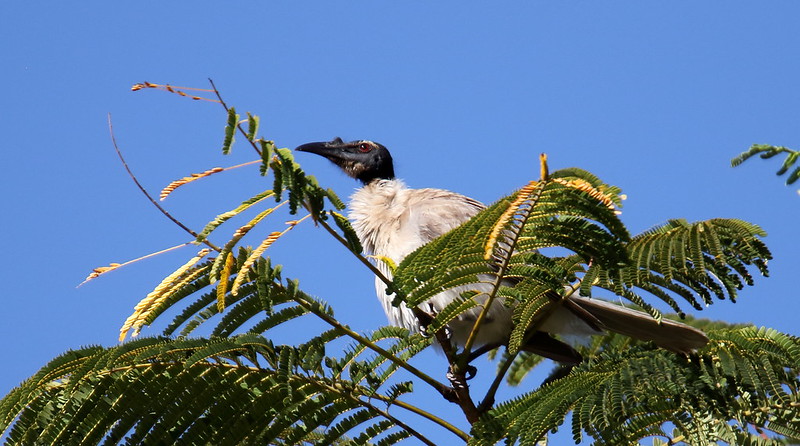
Photo courtesy of Dominic Sherony / CC BY-SA 2.0
The Noisy friarbird breeds from July through to January. They build a large deep cup-shaped nest made from bark and grass, hanging from a horizontal branch about 1 to 3 m above ground. The female lays an average clutch size of 2 to 4 eggs, measuring around 22 to 33 mm (1 to 1 1/3 inches). The color of these eggs ranges from buffer to pay all pink splashed with darker pink brown or purplish colors.

Photo Courtesy of Jim Bendon / CC BY-SA 2.0
This bird is regarded as of the least concern on the IUCN red list.
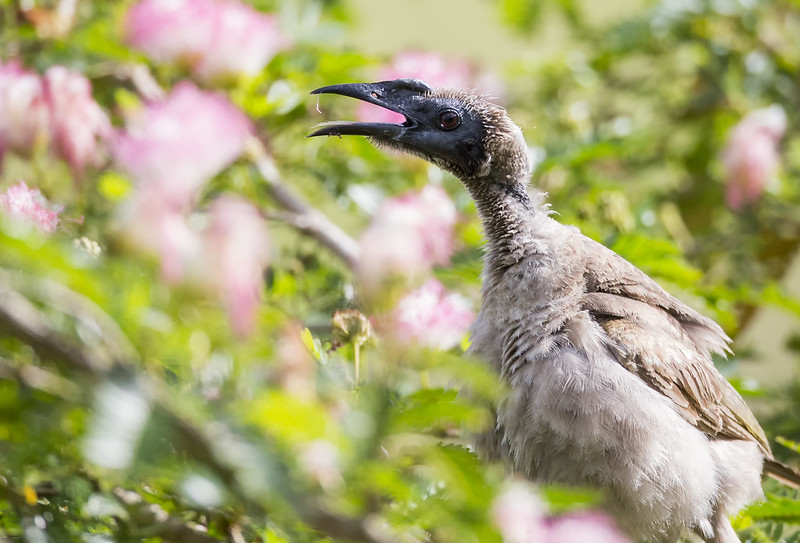
Photo Courtesy of Jim Bendon / CC BY-SA 2.0
You can watch and listen to this right here in the video below:




